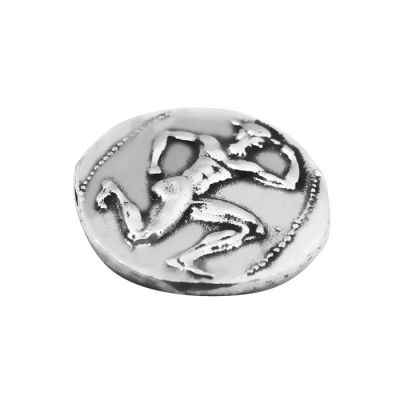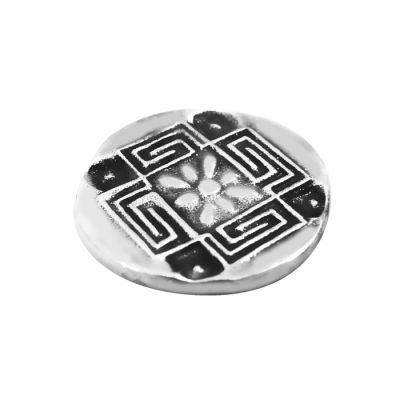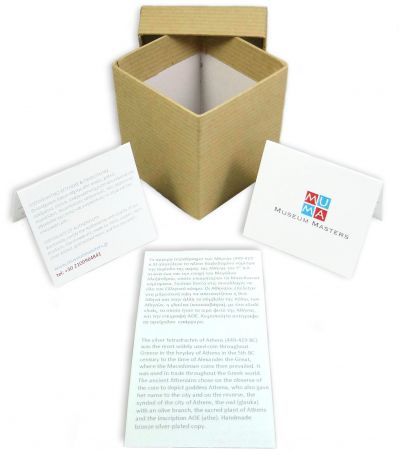Handmade replica of the ancient silver stater of Knossos, which is dated around 425 B.C. It is one of the earliest coins minted at Knossos, a city on the northern coast of Crete. Its designs derive from the city’s most famous myth, the Minotaur in the labyrinth. The Minotaur had the body of a man and the head of a bull. He was born, as a result to the encounter between a bull and Pasiphae, the wife of the Cretan King Minos. On the obverse of the coin, Minotaur is pictured, holding an unidentified object in his raised hand, while a design of the Labyrinth, is shown on the reverse in the shape of a swastika with a floral pattern in the center and squares in the four corners. The coin replica is made of silver-plated brass. Ideal as a gift for the admirers of the ancient Greek world, but also for coin collectors and budding archaeologists.
The coin is offered in an acrylic case for protection and better presentation and gift packaging.
Diameter of the coin: 2,2 cm | Dimensions of the case: 5 cm x 6 cm x 5 cm
Take a look at the rest of the coins collection and the set of four silver-plated coins.
All prices include VAT.
The silver stater of Knossos, dated around 425 B.C., is one of the earliest coins minted at Knossos, a city on the northern coast of Crete. Its designs derive from the city’s most famous myth, the Minotaur in the labyrinth. The Minotaur had the body of a man and the head of a bull. He was born, as a result to the encounter between a bull and Pasiphae, the wife of the Cretan King Minos. The Minotaur was kept by Minos in a specially constructed labyrinth at Knossos, which was made by Daidalos, and was fed with maidens and young boys sent from Athens as tribute to the Cretan king. According to mythology, Minotaur was killed by Theseus.
On the obverse of the coin, Minotaur is pictured, holding an unidentified object in his raised hand, while a design of the Labyrinth, is shown on the reverse in the shape of a clockwise swastika with a floral pattern in the center and squares in the four corners.
Οriginal ancient Greek coins are at the Numismatic Museum in Athens.
No posts found















